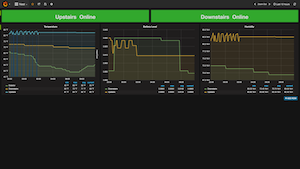Release Announcements
March 31, 2017
Okay, no profit in this, but it certainly is fun!
I have two Nest thermostats in my house and, after some teething pains (yay the
life of an early adopter) they have been pretty solid. But they’re also black
boxes that I know little about. I know they’re collecting mountains of data and
sending it back to the Google mothership. Wouldn’t it be nice to get at some of
that data and build my own reports?
Read More

